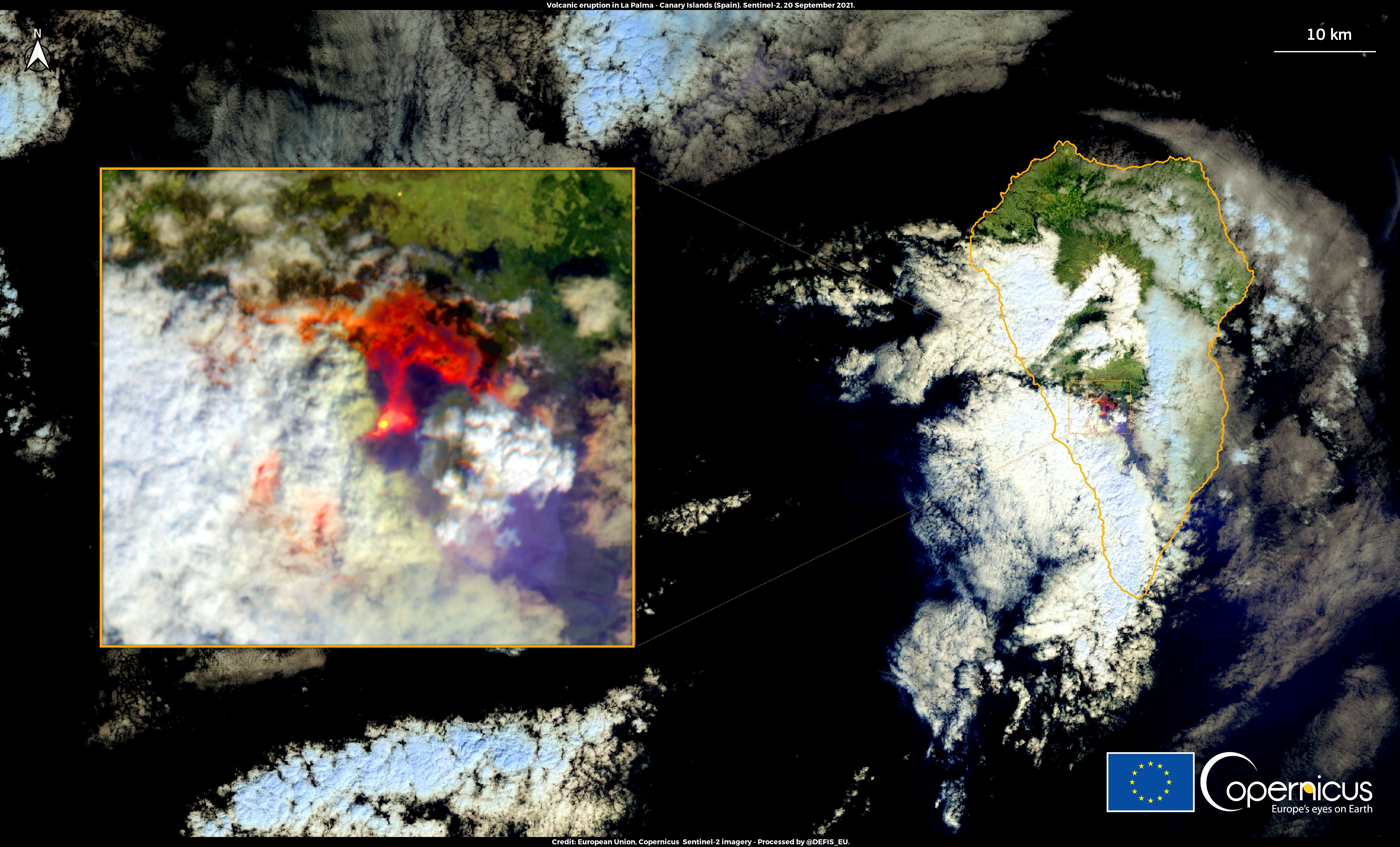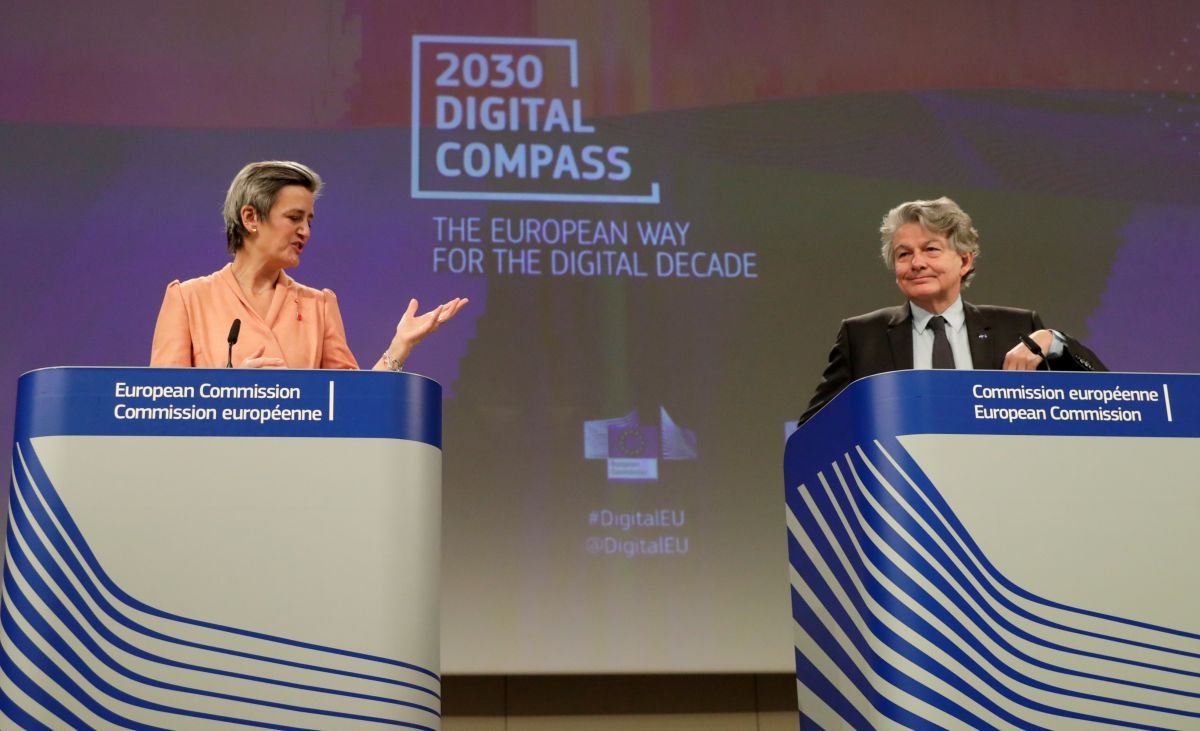New EU Initiatives for Space Security
The EU plans to build a secure satellite-based connectivity system and to develop rules for space traffic management. This is a response to the increasing dependence of EU Member State societies, economies, and services on space technologies. The EU initiatives are expected to increase the stability of in-orbit infrastructure operation as well as improve connectivity on Earth. Their effective implementation will depend on the use of modern technological solutions, as well as the promotion of European standards on a global scale.
 GONZALO FUENTES/ Reuters/ FORUM
GONZALO FUENTES/ Reuters/ FORUM
In February, the EU put forward two initiatives to increase the availability and security of space technologies. The European Commission (EC) presented a regulation establishing the Union Secure Connectivity Programme for the period 2023-2027. In a joint communication, the EC and the High Representative proposed an EU Approach for Space Traffic Management.
The initiatives are a response to the global challenge related to the increasing dependence on space systems and the increasing number of threats to their operation. They are therefore an important element of responding to the current needs of the Member States. They were also part of the flagship proposals of the French presidency of the EU Council in the first half of 2022.
The Importance of Space
Space technologies are used for both civil and military purposes. Services based on satellite data affect many sectors of the economy, allowing banking transactions, providing information on traffic intensity, fertiliser dosing in agriculture, and other uses. Space systems also ensure the effectiveness of state services activities, for example, by providing satellite images for military operations and crisis response. Still, not all regions of Europe have uninterrupted access to satellite communications, which in turn lowers the level of civil protection and leads to digital exclusion, among other outcomes. Only 56% of households in the EU have access to broadband internet. Nevertheless, dependence on space technologies continues to grow, and with it the number of solutions improving the quality of life of EU citizens. Ensuring the safe operation of systems and infrastructure in orbit is therefore one of the key challenges facing the EU in the coming years.
EU Initiatives
The main objective of the satellite-based Secure Connectivity Programme is to ensure it is universally available at low costs in Europe and in regions of strategic importance for the EU, such as Africa and the Arctic. Eliminating so-called dead zones and extending coverage are in line with the goals of the 2030 Digital Compass and the Global Gateway strategy. The programme is to contribute to the improvement of connectivity between state services and security, as well as digital inclusion of EU citizens, giving impulse to the expansion of broadband internet. In addition, implementation of the programme should increase the competitiveness of the EU economy and employment in the space sector. According to EU estimates, the gross value-added of the programme will amount to €17-24 billion. The cost is estimated at €6 billion, which includes €2.4 billion of EU funds and €3.6 billion from other public (including the European Space Agency) and private sources.
The communication setting out an EU Approach for Space Traffic Management (STM) is a response to congestion in the space environment. In it, the EU points to the need to establish common operational and legislative requirements that are to contribute to increasing the stability and profitability of operations in Earth orbits. STM thus covers the entire process from accessing and operating in space to returning to Earth. The Communication included EU proposals for: 1) setting civil and military traffic management requirements, 2) increasing technological capabilities in space monitoring (including spacecraft and space debris), 3) putting forward specific regulatory proposals, and 4) promoting the EU approach in the international arena.
Security Challenge
The increase in the volume of traffic in space, related to the development of the technology of small satellites and reusable launchers, poses a serious threat to, among others, air traffic on Earth and the functioning of infrastructure in Earth orbits. The existing international regulations do not comprehensively respond to this new situation, and reaching a global consensus in the coming years is necessary if the current upward trend in usage is maintained. However, difficulties may be caused by the divergent interests of the largest entities involved in space exploration—the U.S., the EU, Russia, and China—including the mutual breakdown of cooperation between Western countries and Russia after the latter’s attack on Ukraine in February 2022.
The rapidly growing number of objects in orbit threatens a loss of satellites as a result of collisions with other objects or space debris, as well as being actively targeted (e.g., in November 2021, Russia carried out a demonstration attack on one of its satellites). Therefore, better detection of threats requires constant technological adaptation, for example, in space surveillance and tracking (SST). In orbit, a collision with an object just 10 cm in diameter can have catastrophic consequences to the larger vehicle, and the number of objects of this size or larger is currently estimated by the European Space Agency at about 34,000. Every year, the EU SST Consortium (consisting of France, Germany, Italy, Poland, Portugal, Romania, and Spain) records an increasing number of events with a collision risk. The continued uninterrupted use of space also requires that the actors involved in space exploration commit to reducing the production of debris and removing these objects from orbits.
The deepening dependence on satellite data means that cyberattacks, such as jamming or spoofing, also have increasingly serious consequences. Hackers can either use such techniques to access encrypted content, or to jeopardise the physical security of objects in space and on Earth, for example, by causing them to collide as a result of interfering with the recipients’ satellite signal. An additional layer of security in the future will be guaranteed through quantum cryptography technologies, the development of which is currently one of the priorities of the largest entities involved in space exploration.
Conclusions and Perspectives
The EU is working both to expand its autonomous capabilities and strengthen its international position, as well as to enhance the security of the space environment and its dependent sectors on Earth. Although the new initiatives respond to the most pressing needs, their implementation is a long-term process, and the fulfilment of postulates related to space traffic management depends only in part on the standards of operation and legislation on the EU side. The planned cooperation with the U.S. offers great potential as jointly developed standards will increase the chance of reaching a global consensus on this issue.
The international position of the EU will depend on the speed of implementation and the quality of the connectivity that will cover strategic areas outside Europe in Africa and the Arctic. Improving satellite connectivity not only will give an impulse to economic growth and reduce social exclusion but also will positively affect the effectiveness of actions in crises or during external missions and operations. The use of satellite connectivity, combined with quantum encryption, will also improve the quality and security of communication, such as that between the embassies of the EU Member States in the world. The EU plans to cover the existing capacity shortages by using low and medium Earth orbits. However, building a satellite constellation requires swift actions, as available orbital slots and frequencies are already limited.
Ensuring the safe operation of space infrastructure also will require additional efforts in the SST area. First of all, it will be necessary to develop sensor technology to improve the quality of data that is collected on space threats. Poland, as a member of the consortium, can use its research and development potential in the field of satellite detection. An important element is also building international partnerships that would allow for the deployment of a larger number of sensors outside Europe. The assumptions of the EU that make the detection of a larger number of objects that may pose a threat in space dependent on increased sky coverage should be assessed positively.





